On September 24th, the OSIRIS-REx spacecraft will drop a capsule into Earth’s atmosphere. Inside it are samples of material from the asteroid Bennu. If all goes as planed, the capsule with its precious cargo will land at a site in the state of Utah.
In this article, we will discuss how often scientists manage to study celestial rock and what secrets of the Universe it holds.
Moon Rocks
For the first time, lunar soil was delivered to Earth by the crew of Apollo 11 in July 1969. At that time, when the spacecraft was en route to the Moon, the team received a message from Earth that the Soviet probe Luna-15 was in lunar orbit. In a last-ditch effort to disrupt the expected impact of NASA’s manned expedition, the USSR launched a small unmanned spacecraft three days before the launch of Apollo 11 (July 13). Its mission was not only to land on the Moon but also to collect soil samples and deliver them to Earth before the American astronauts returned.
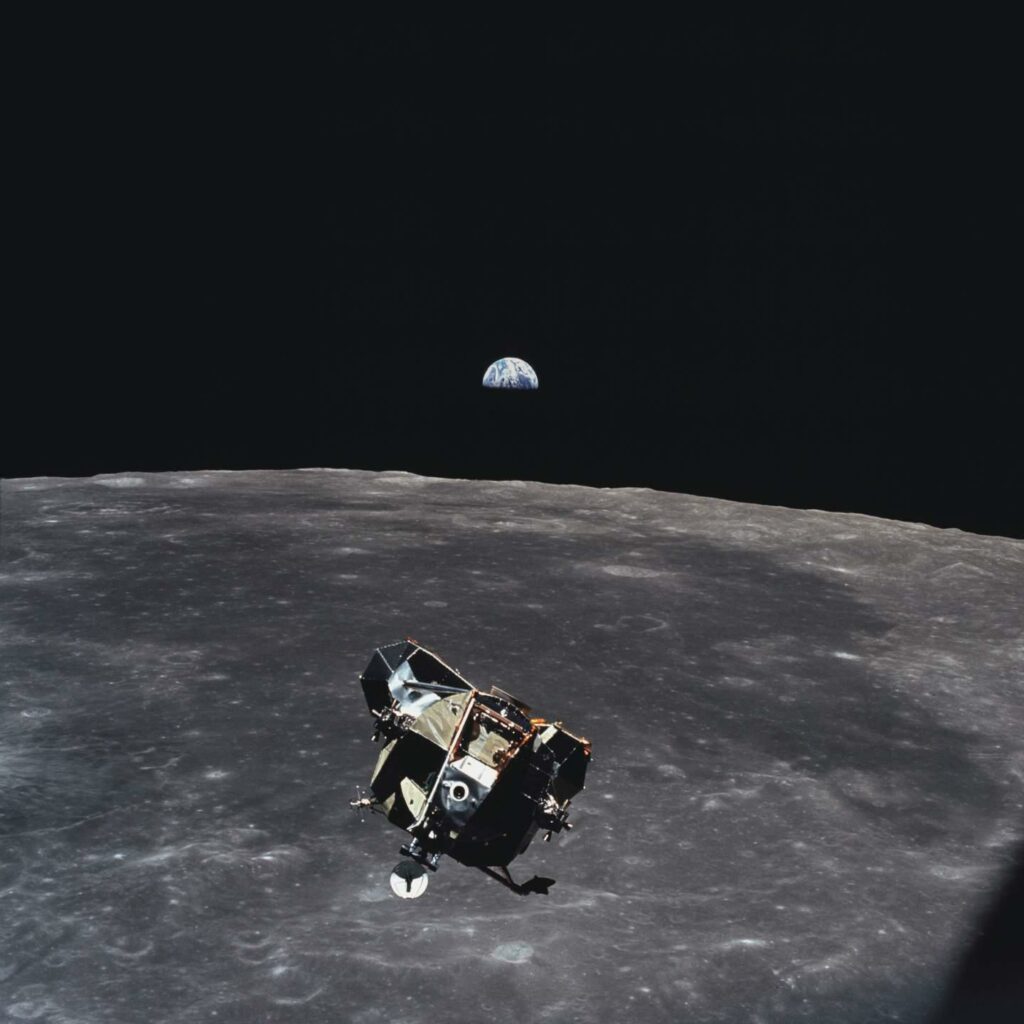
In the United States, analytical articles were published in newspapers, suggesting that the Soviet “mysterious probe” aimed to create technical obstacles for the American expedition. NASA was concerned that the Soviet Union’s activities around the Moon and the communications sessions with the Luna-15 station could cause communication problems with Apollo 11.
To clarify the situation, the commander of the Apollo 8 crew, Frank Borman, used the famous direct communication line between Moscow and Washington, which had been established to prevent a nuclear Armageddon after the Cuban Missile Crisis of 1962. According to information provided by the President of the Soviet Academy of Sciences, Mstislav Keldysh, it became clear that the orbit of Luna-15 did not intersect with the trajectory of Apollo 11.
The flight of Luna-15 ended in a crash. The interplanetary spacecraft crashed onto the surface of the Moon on July 21, a day after the successful landing of Apollo 11.
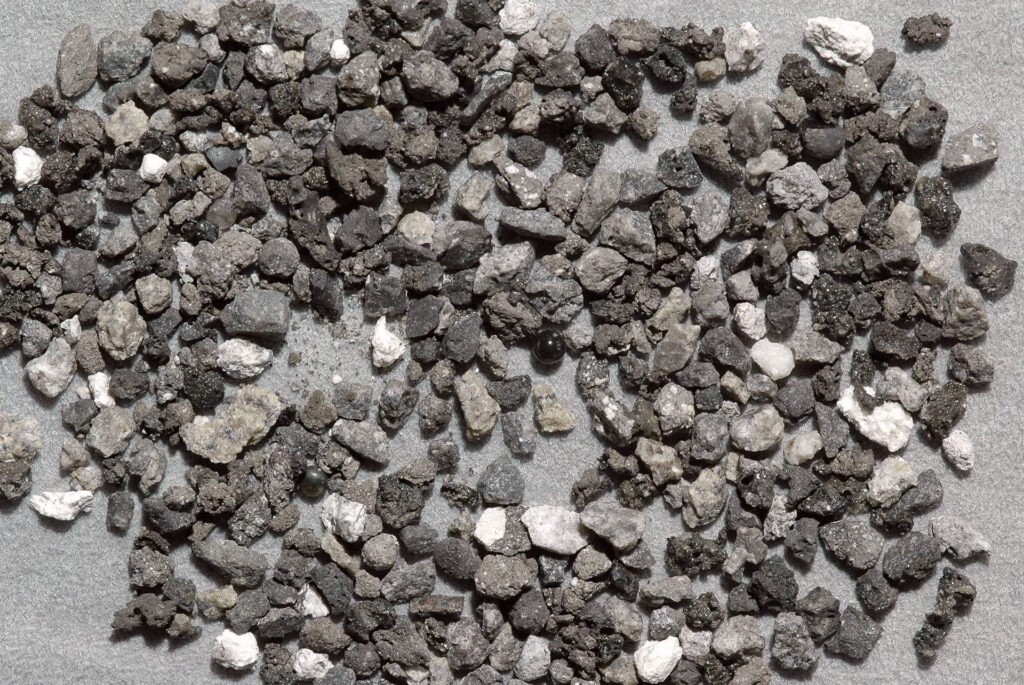
The first crew to visit the Moon brought back 21.7 kg of lunar regolith. Six missions under the Apollo program brought back 382 kg of lunar soil.
The Soviet Union succeeded in delivering 101 grams of soil on September 24, 1970, using the Luna-16 station. In total, three missions— Luna-16, Luna-20, and Luna-24—delivered regolith from three different regions of the Moon, totaling 324 grams.
The next batch of lunar material arrived on Earth more than 40 years after the previous “shipment” from Earth’s satellite. This time, the Chinese spacecraft “Chang’e-5” autonomously collected 1.73 kg of lunar soil on December 16, 2020. This exceptionally valuable scientific material allows us to gain new knowledge about the origin of the Moon, its history, structure, and better understand the past of the Solar System.
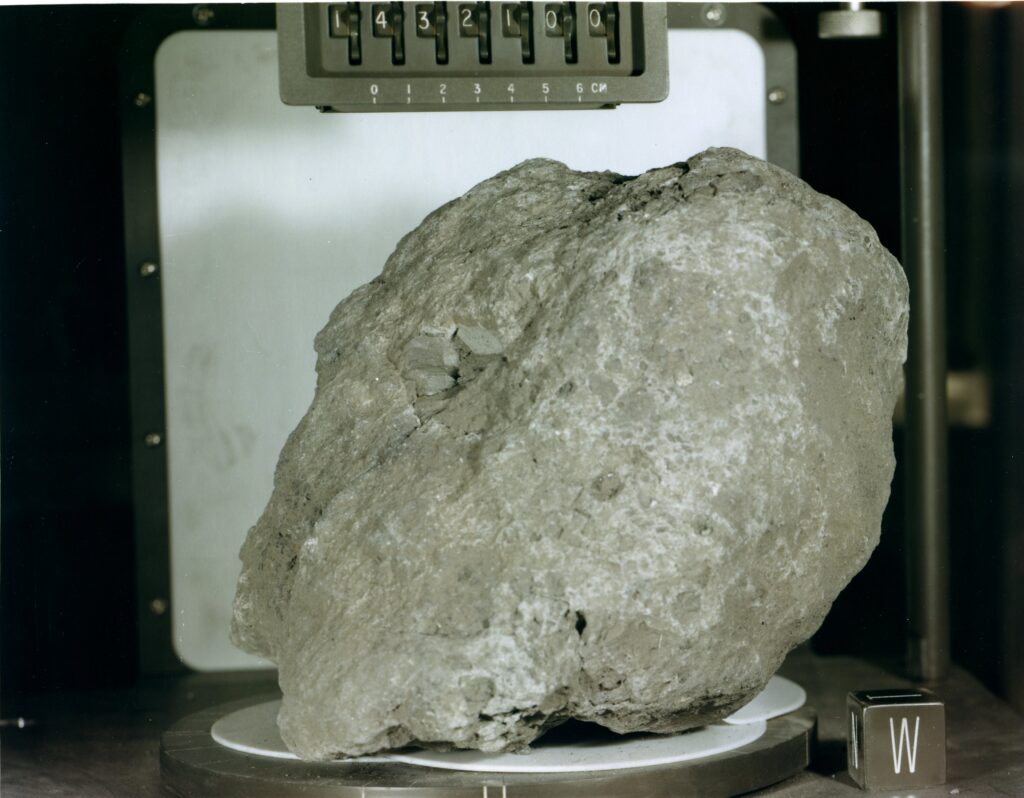
Among the samples of lunar rock brought back by Apollo missions, a 9-kilogram fragment named “Big Bertha” stands out. In early 2019, the journal Earth and Planetary Science Letters published the results of research on this fragment conducted by an international team of scientists. In it, quartz, feldspar, and zircon inclusions were found. These minerals are common on Earth but not characteristic of the Moon. Detailed research showed that the conditions under which they formed existed on a young Earth, but as far as is known, they have never been on its satellite.
Most likely, this fragment formed in the depths of our planet 4 billion years ago. Later, due to the impact of a large asteroid, a part of Earth’s rock ended up in interplanetary space and from there fell onto the surface of the Moon.
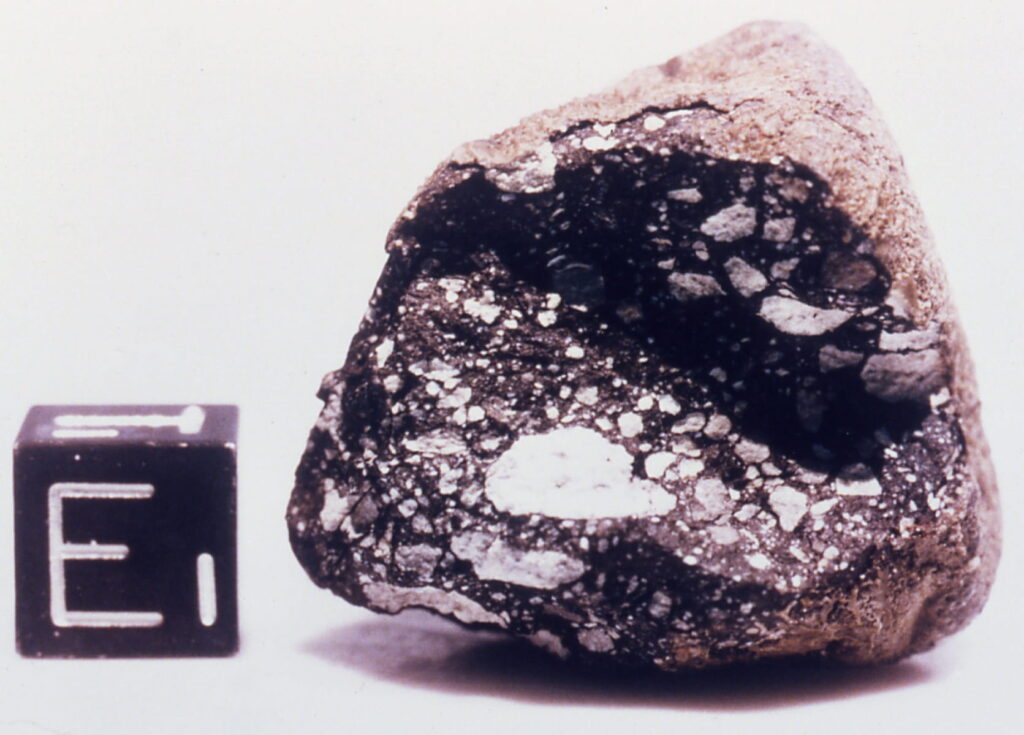
Such “interplanetary exchanges” of material are not a rarity. Today, according to the database of the International Meteoritical Society, over 400 lunar meteorites are known, whose origin has been confirmed through radioisotope analysis. The first lunar meteorite, Allan Hills 81005, was found in Antarctica in 1982.
Comet Tail and Stardust
The first spacecraft to return samples of comet and extraterrestrial material from beyond the orbit of the Moon to Earth was the automatic interplanetary probe Stardust (NASA). It was launched on February 7, 1999, and five years later, on January 2, 2004, it achieved its goal—making a flyby of Comet Wild 2 (81P/Wild) at a distance of 240 kilometers. During this time, the spacecraft collected samples of material from the comet’s tail and cosmic dust.
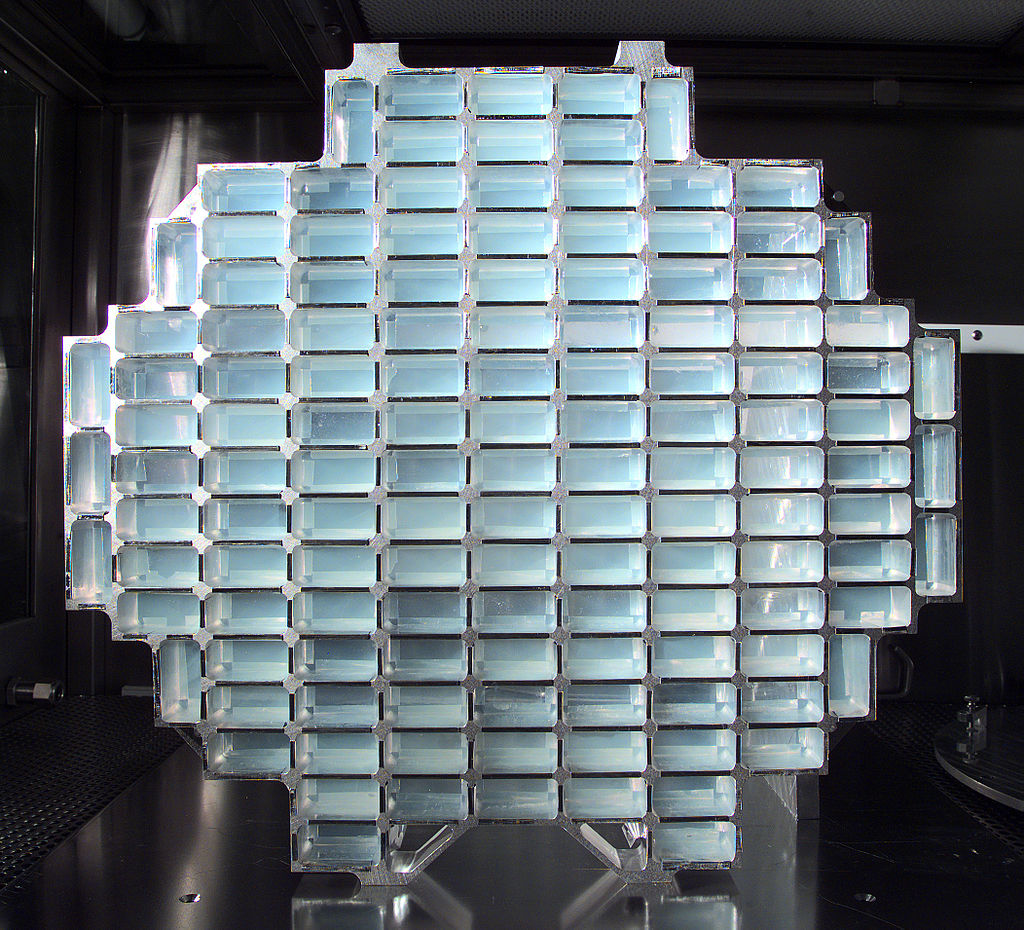
On January 15, 2006, the capsule with the samples returned to Earth, having covered more than 4.6 billion kilometers. The spacecraft managed to capture nearly 30 large and small particles of comet material.
The extracted dust fragments contained chemical elements such as magnesium, aluminum, chromium, nickel, manganese, copper, gallium, and the isotope iron-60 (60Fe), which has a relatively short half-life (2.6 million years).
However, the mission did not end there. The spacecraft, which remained in a heliocentric orbit after releasing the capsule, was given a new name (Stardust-NExT) and a new task—to photograph Comet Tempel-1 (9P/Tempel). On February 14, 2011, it passed close to the comet’s nucleus and filmed surface changes caused by the impact of an impactor. This was the second encounter of NASA’s spacecraft with Comet Tempel-1. In 2005, it became the target of the Deep Impact mission, which involved bombarding the comet’s nucleus with a 370-kilogram projectile (the so-called impactor). According to calculations, the impactor had a speed of 10.6 km/s. The energy of the impact could be compared to the explosion of 5 tons of TNT. The collision occurred at a distance of 133 million kilometers from Earth. The result was a relatively small amount of water and a lot of dust in the ejecta. This indicated that the comet was far from being just an “ice ball.” Carbon dioxide gas and organic compounds were also detected in the ejections.
Solar Wind
Almost 4.6 billion years ago, a protosolar nebula transformed into the modern Solar System. To understand the processes that led to this transformation, scientists decided to study samples of this nebula. Thus, the NASA Genesis mission was born, launched on August 8, 2001.
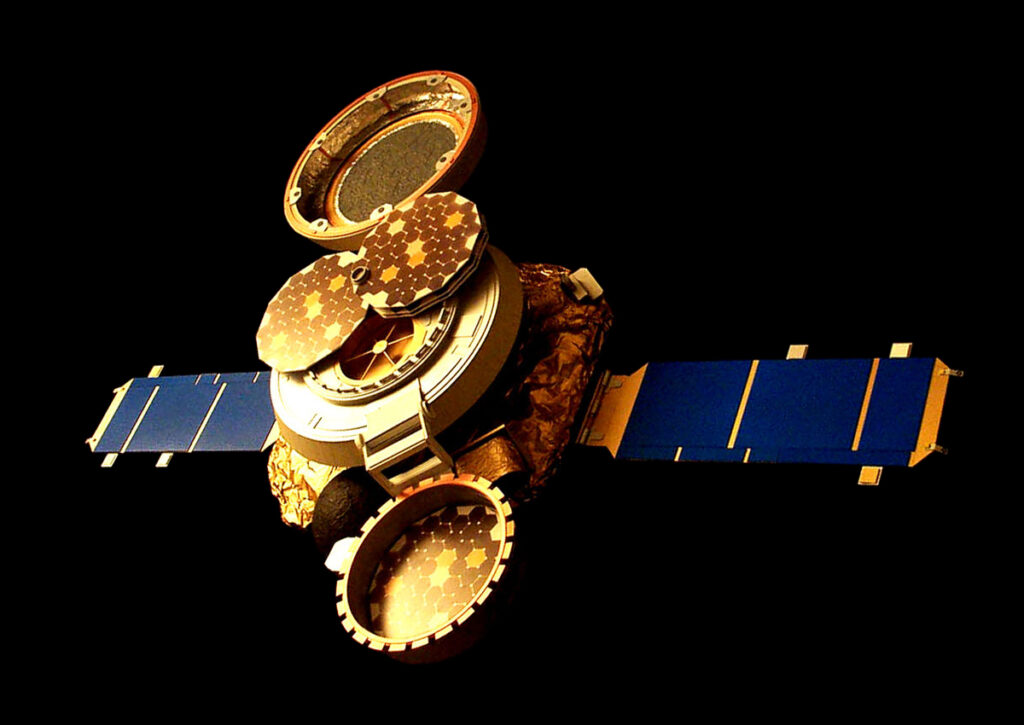
This device collected samples of solar wind — the material ejected into space from the outer layer of the Sun —and delivered them to Earth. This material can be thought of as a “fossil” of the protoplanetary nebula since scientific evidence suggests that the outer layer of our star has remained relatively unchanged for billions of years.
The Genesis mission utilized a unique orbit, which took three years to plan. After launch, a single burn of the spacecraft’s engines placed it into a Lissajous orbit around the Earth-Sun L₁ Lagrange point. Over the course of three years, Genesis completed four revolutions on this orbit without using corrective thrusters to avoid contaminating the samples. Then, following its planned trajectory without the use of the main engine, Genesis undertook a five-month journey of over 3 million kilometers to reach the L₂ Lagrange point, utilizing lunar gravity assists along the way.
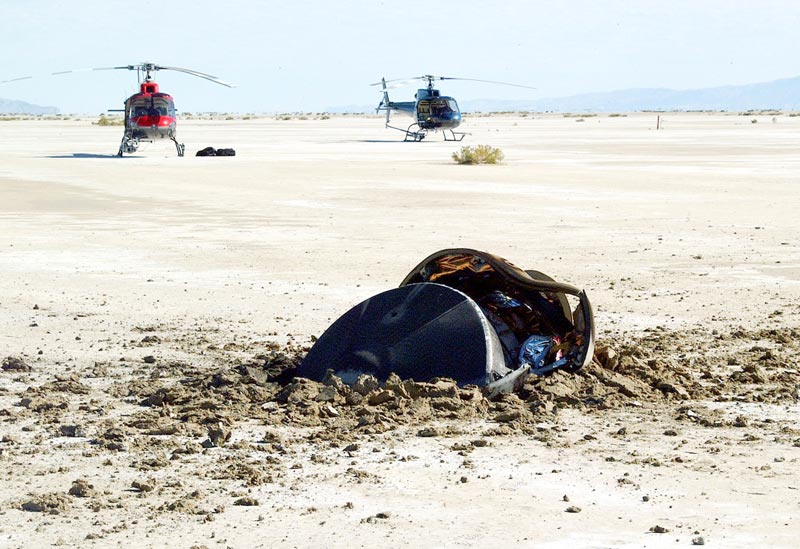
Genesis returned to Earth on September 8, 2004. However, due to an error during the installation of one of the acceleration sensor assemblies, the landing did not go as planned, resulting in the parachute not deploying and the capsule with samples impacting the Earth at high speed. Despite this mishap, scientists were able to recover some of the space material by analyzing the capsule fragments.
Asteroid Matter
The first-ever successful landing on an asteroid and the return of its samples to Earth was accomplished by the Japanese spacecraft Hayabusa from the Japan Aerospace Exploration Agency (JAXA).
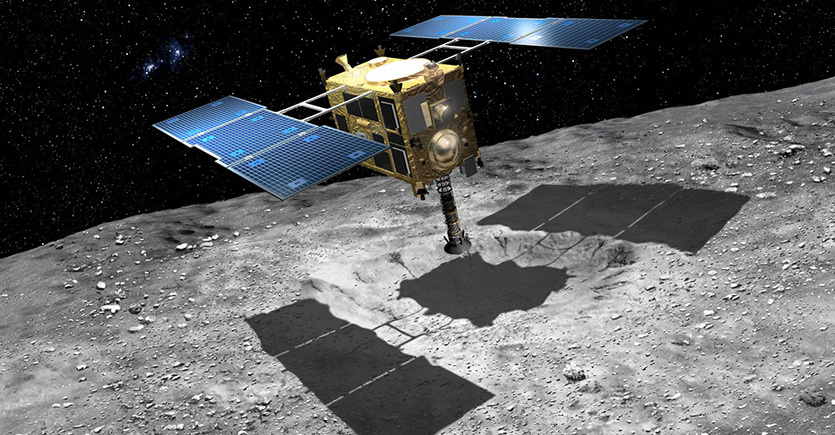
This challenging mission was planned and prepared for nearly 15 years. Hayabusa was launched on May 9, 2003, with the goal of returning samples of asteroid Itokawa (25143 Itokawa) to Earth in June 2007.
On September 12, 2005, the spacecraft approached the “celestial stone” at a planned distance of 20 kilometers and initiated detailed observations. However, several problems arose. First, the specialized MINERVA (MIcro/Nano Experimental Robot Vehicle for Asteroid) robot designed for landing on the asteroid failed to do so. Second, when Hayabusa itself descended to the surface of Itokawa in November, the sampling instrument malfunctioned. Flight controllers believed that dust had entered the sample container during contact with the asteroid’s surface, prompting the decision to seal the container and send the probe back to Earth. Due to communication and propulsion issues, the mission was completed three years later than planned.
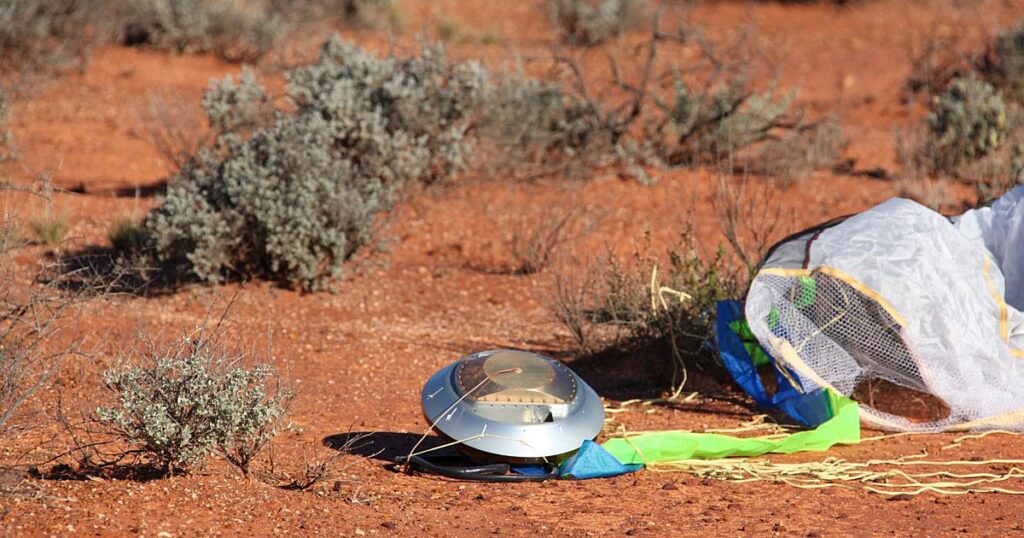
On June 13, 2010, the Hayabusa probe re-entered Earth’s atmosphere, releasing a capsule with asteroid samples. This marked the first return of material from another celestial body since the Soviet Union’s Luna 24 mission in 1976.
Having learned from the shortcomings of the previous mission, JAXA launched the spacecraft Hayabusa-2 on December 3, 2014, targeting the asteroid Ryugu (162173 Ryugu), which has a diameter of approximately 900 meters.
In total, Hayabusa-2 spent 18 months in close proximity to the asteroid, from June 2018 to November 2019. On February 22, 2019, the Japanese spacecraft successfully landed on the surface of Ryugu to collect samples.
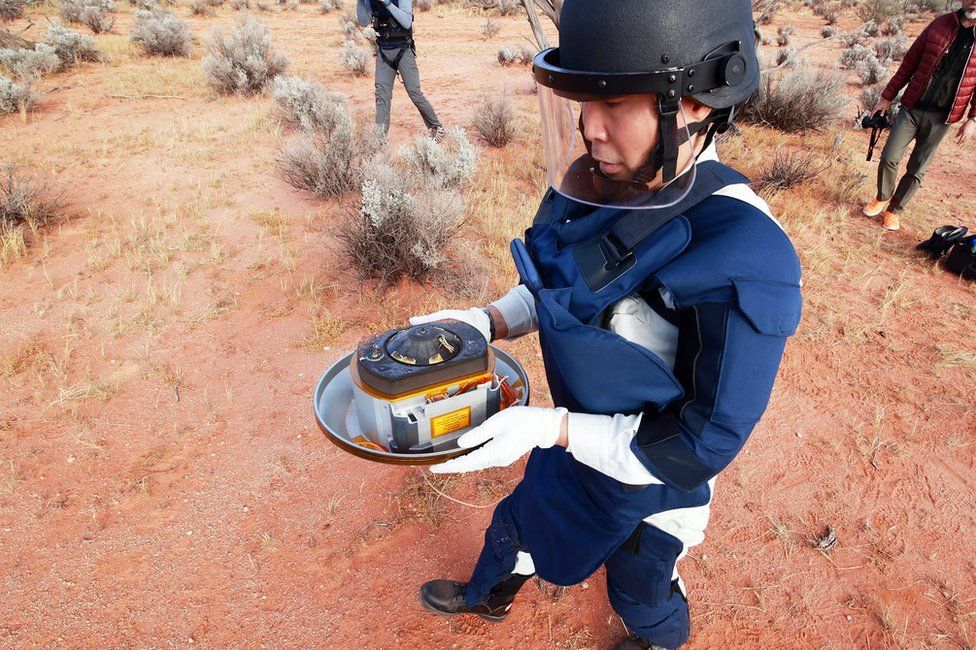
On April 5 of the same year, from an altitude of 500 meters, Hayabusa-2 shot a projectile into the asteroid’s surface to obtain subsurface samples. On July 11, Hayabusa-2 landed again, this time within 20 meters of a crater created during a previous explosive event, collecting rock fragments for transport back to Earth.
On December 5, 2020, the probe released a capsule containing the samples, which landed in southern Australia. Subsequently, the spacecraft continued its mission, flying past Earth and heading towards another target, asteroid 2001 CC21, which it will encounter in July 2026. Researchers hope that the analysis of these samples will provide insights into the origin of the Solar System and life on Earth. They also aim to determine whether asteroids like Ryugu could have impacted Earth in the past, possibly bringing water to our planet.
Hayabusa-2 collected more material from the surface of the asteroid Ryugu than expected. Researchers hope that analyzing these samples will help them answer some questions about the origin of the solar system and life on Earth. Analysts also want to find out whether asteroids like Ryugu could have once hit our planet and brought water to it.
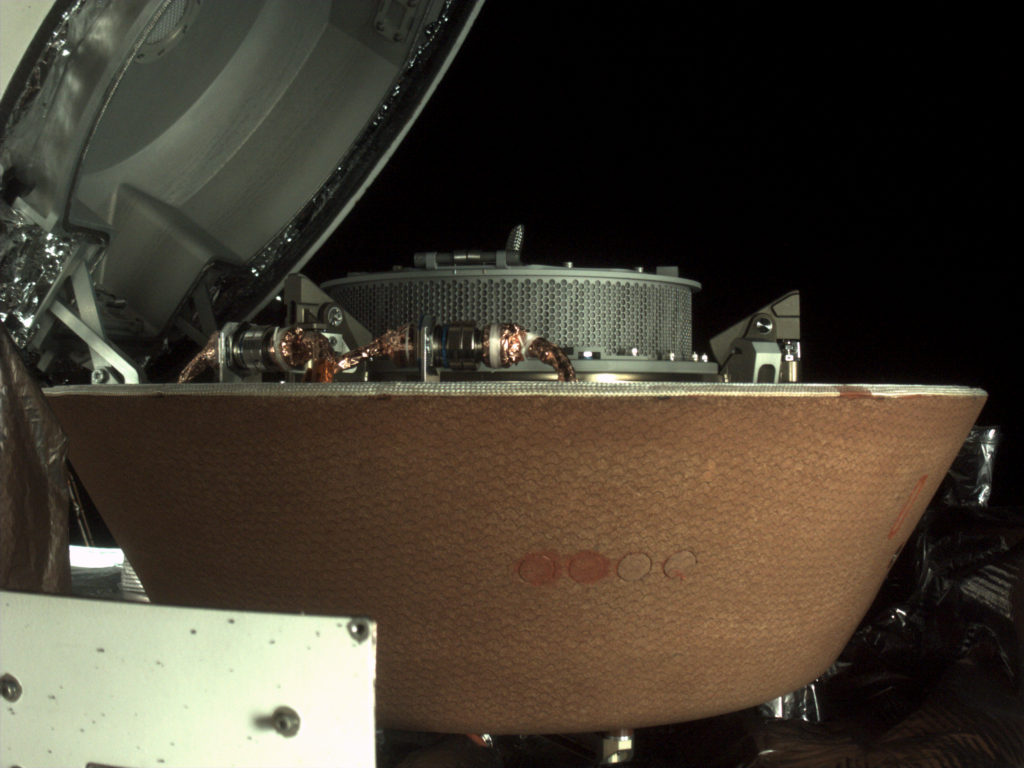
Currently, samples of rock from the asteroid Bennu, collected by the American spacecraft OSIRIS-REx, are on their way to Earth. The spacecraft approached the surface of this celestial body, which is approximately 500 meters in size, for just a few seconds.
The contact with Bennu took place at a distance of 330 million kilometers from Earth. Scientists hope that OSIRIS-REx was able to gather several handfuls of cosmic dust. Researchers aimed to obtain at least 60 grams, and for the most successful outcome, the probe was supposed to extract around a kilogram of rock.

Asteroid Bennu is an intriguing celestial object roughly the size of the Empire State Building in New York. In shape, it resembles a child’s spinning top.
Scientists classify Bennu as a type of asteroid known as carbonaceous or carbon-rich. This means that it contains a significant amount of chemical elements that existed 4.5 billion years ago when planets and the Sun formed. That’s why scientists are eager to transport samples of this celestial body’s rock to Earth laboratories for study.
Martian Rock
The next celestial body from which scientists plan to obtain substance samples is Mars. Currently, there are three missions in development with this objective.
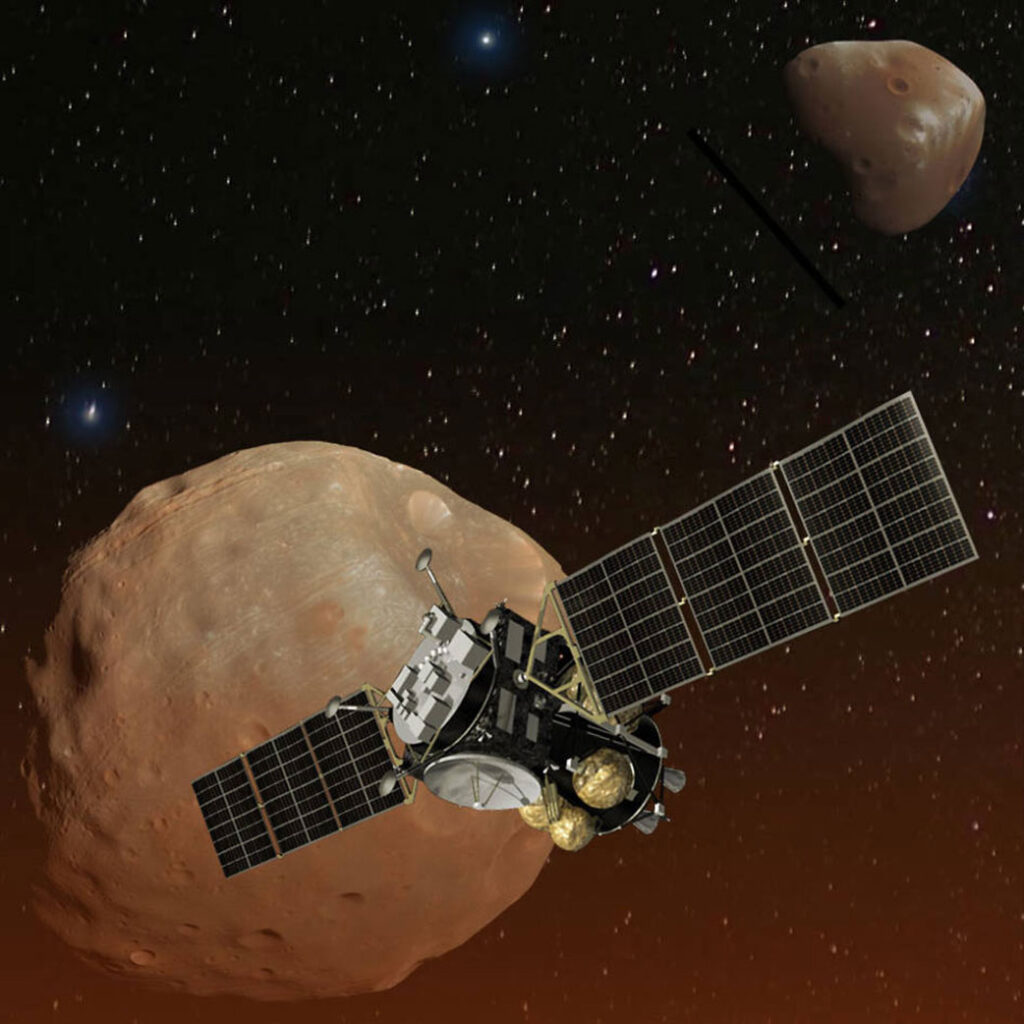
The first to launch is the Japanese Martian Moons eXploration (MMX) mission, scheduled for September 2024, with arrival at Mars expected in July 2025. The spacecraft will then approach Mars’ larger moon, Phobos, collect a sample of material, and return on a course towards Earth. The delivery of the material is anticipated in 2029.
The MMX mission will serve as a prelude to two even more ambitious missions, both aiming to bring Martian soil samples back to Earth. One of them is a collaborative effort of NASA and ESA and is known as Mars Sample Return. The other is undertaken by China and is named Tianwen-3.
The implementation of Tianwen-3 is set to begin in 2028 with the launch of two spacecraft to Mars. One will land on the planet’s surface, collect a soil sample, and then deliver a capsule with the sample to orbit. There, it will be retrieved by the second spacecraft, which will then return the samples on a course towards Earth. If all goes as planned, the capsule with soil samples will return to Earth in 2031.
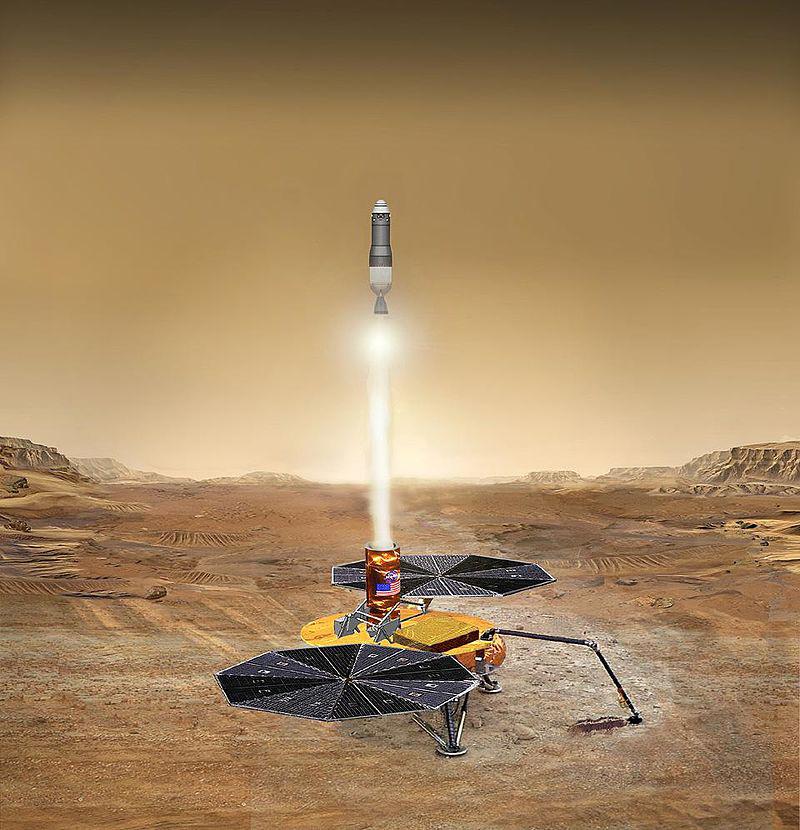
The American-European project also involves launching two spacecraft towards Mars. A key difference from Tianwen-3 is that they will pick up previously prepared soil samples. Currently, the Perseverance rover is involved in collecting these samples. At present, the start of the Mars Sample Return project is scheduled for 2027-2028, with the delivery of the samples to Earth expected in 2033.
